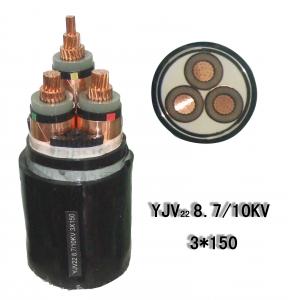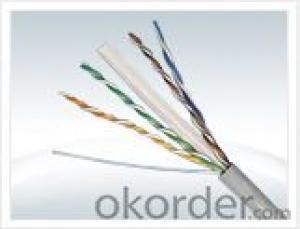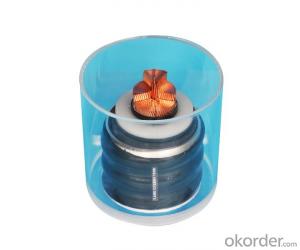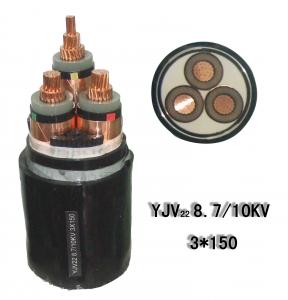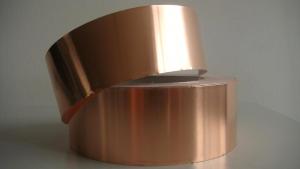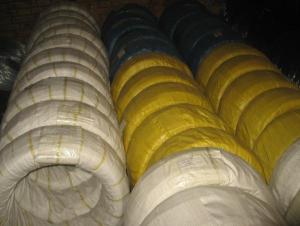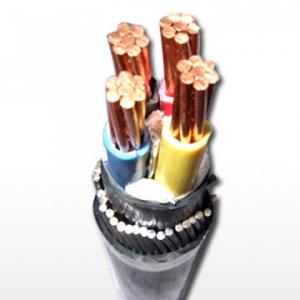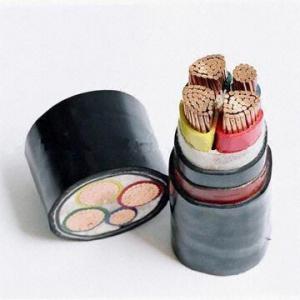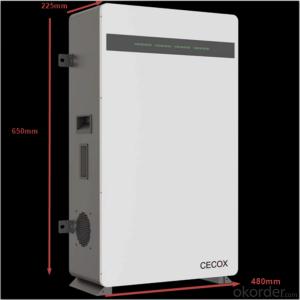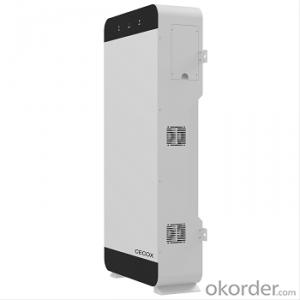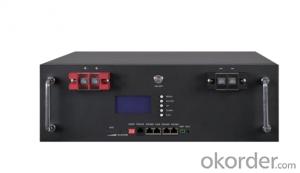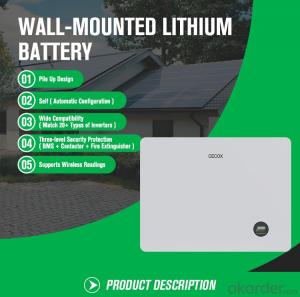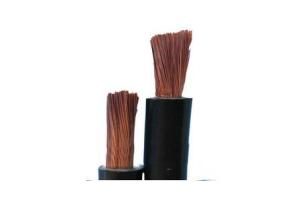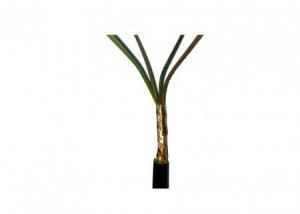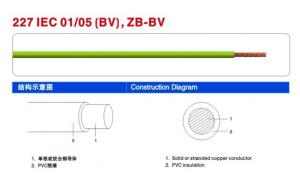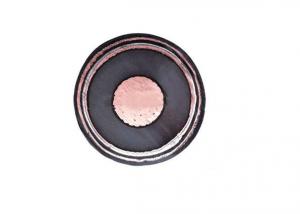SYV solid polyethylene insulation coaxial cable of the radio
- Loading Port:
- Shanghai
- Payment Terms:
- TT OR LC
- Min Order Qty:
- 100 m
- Supply Capability:
- 100000 m/month
OKorder Service Pledge
OKorder Financial Service
You Might Also Like
Model USES
1, SYV: solid polyethylene insulation coaxial cable of the radio
2, SYWV (Y) : physical foaming polyethylene insulated cable, cable TV system video (rf)
3, coaxial cable (SYV, SYWV, SYFV) suitable for CCTV and cable TV works
SYWV (Y), SYKV cable TV, broadband network structure of special cable
Anaerobic round copper wire, coaxial cable of the single + physical foaming polyethylene (insulation) + (tin) + aluminum + PVC (PE)
Solid core polyethylene insulated coaxial radio frequency cable (SYV series) product main technical parameters
pe | Inner conductor structure mm | Insulation external diameter mm | Braided shield | Cable outside diameter mm | characteristic impedance Ω | Attenuation frequency (20℃) | |
| frequency(MHz) | Attenuation ≤dB/m | ||||||
| SYV-50-2-1 | 7×0.16 | 1.50±0.10 | 1 | 2.8±0.2 | 50±2 | 200 | 0.450 |
| SYV-50-2-7 | 7×0.16(铜包钢) | 1.50±0.10 | 1 | 2.8±0.2 | 0.450 | ||
| SYV-50-2-8 | 7×0.16(铜包钢) | 1.50±0.10 | 1 | 2.8±0.2 | 0.450 | ||
| SYV-50-2-41 | 1×0.68 | 2.20±0.10 | 1 | 4.0±0.2 | 0.310 | ||
| SYV-50-3-1 | 7×0.32 | 2.95±0.13 | 1 | 5.0±0.2 | 0.240 | ||
| SYV-50-3-3 | 1×0.90 | 2.95±0.13 | 1 | 5.0±0.2 | 0.220 | ||
| SYV-50-3-4 | 1×0.90 | 2.95±0.13 | 1 | 5.0±0.2 | 0.220 | ||
| SYV-50-3-5 | 1×0.90 | 2.95±0.13 | 2 | 5.8±0.2 | 0.220 | ||
| SYV-50-3-41 | 1×0.90 | 2.95±0.13 | 2 | 5.8±0.2 | 0.220 | ||
| SYV-50-5-1 | 1×1.40 | 4.80±0.20 | 1 | 7.2±0.3 | 0.150 | ||
| SYV-50-5-3 | 1×1.40 | 4.80±0.20 | 1 | 7.2±0.3 | 0.150 | ||
| SYV-50-5-4 | 1×1.40 | 4.80±0.20 | 2 | 7.9±0.3 | 0.150 | ||
| SYV-50-5-41 | 1×1.40 | 4.80±0.20 | 2 | 7.9±0.3 | 0.150 | ||
| SYV-50-7-1 | 7×0.75 | 7.25±0.25 | 1 | 10.3±0.3 | 0.110 | ||
| SYV-50-7-2 | 7×0.75 | 7.25±0.25 | 1 | 10.3±0.3 | 0.110 | ||
| SYV-50-7-3 | 7×0.75 | 7.25±0.25 | 2 | 11.0±0.3 | 0.110 | ||
| SYV-50-7-4 | 7×0.75 | 7.25±0.15 | 1 | 10.3±0.3 | 50±1 | 3000 | 0.620 |
| SYV-50-7-6 | 7×0.75 | 7.25±0.15 | 2 | 11.0±0.3 | 0.620 | ||
| SYV-50-7-41 | 7×0.75 | 7.25±0.25 | 2 | 11.0±0.3 | 50±2 | 200 | 0.110 |
| SYV-50-9-41 | 7×0.95 | 9.00±0.30 | 1 | 12.2±0.4 | 0.095 | ||
| SYV-50-12-1 | 7×1.15 | 11.50±0.30 | 1 | 15.0±0.4 | 0.080 | ||
| SYV-50-12-41 | 7×1.15 | 11.50±0.30 | 1 | 15.0±0.4 | 0.080 | ||
| SYV-50-15-41 | 7×1.54 | 15.00±0.40 | 1 | 19.0±0.5 | 0.065 | ||
| SYV-50-17-1 | 1×5.00 | 17.30±0.40 | 1 | 22.0±0.5 | 0.056 | ||
| SYV-50-17-2 | 1×5.00 | 17.30±0.40 | 1 | 22.0±0.5 | 0.056 | ||
| SYV-50-17-3 | 1×5.00 | 17.30±0.40 | 2 | 22.7±0.5 | 0.060 | ||
| SYV-50-17-41 | 19×1.04 | 17.30±0.40 | 1 | 22.0±0.5 | 0.060 | ||
| SYV-75-3-41 | 7×0.17 | 3.00±0.13 | 1 | 5.0±0.25 | 75±3 | 200 | 0.280 |
| SYV-75-4-1 | 7×0.21 | 3.70±0.13 | 1 | 6.0±0.2 | 0.220 | ||
| SYV-75-4-2 | 7×0.21 | 3.70±0.10 | 2 | 6.7±0.2 | 75±1.5 | 3000 | 0.950 |
| SYV-75-4-3 | 1×0.59 | 3.70±0.13 | 1 | 6.0±0.2 | 75±3 | 200 | 0.190 |
| SYV-75-4-4 | 1×0.59 | 3.70±0.13 | 1 | 6.0±0.2 | 0.190 | ||
| SYV-75-5-4 | 1×0.75 | 4.80±0.20 | 1 | 7.2±0.3 | 0.150 | ||
| SYV-75-5-5 | 1×0.75 | 4.80±0.20 | 2 | 7.9±0.3 | 0.150 | ||
| SYV-75-5-41 | 1×0.75 | 4.80±0.20 | 1 | 7.2±0.3 | 0.150 | ||
| SYV-75-5-42 | 1×0.75 | 4.80±0.20 | 2 | 7.9±0.3 | 0.150 | ||
| SYV-75-7-1 | 7×0.40 | 7.25±0.25 | 1 | 10.3±0.3 | 0.120 | ||
| SYV-75-7-2 | 7×0.40 | 7.25±0.25 | 1 | 10.3±0.3 | 0.120 | ||
| SYV-75-7-3 | 7×0.40 | 7.25±0.15 | 2 | 11.0±0.3 | 75±1.5 | 3000 | 0.600 |
| SYV-75-7-4 | 1×1.15 | 7.25±0.15 | 1 | 10.3±0.3 | 0.520 | ||
| SYV-75-7-8 | 1×1.15 | 7.25±0.25 | 1 | 10.3±0.3 | 75±3 | 200 | 0.100 |
| SYV-75-7-41 | 7×0.40 | 7.25±0.25 | 2 | 11.0±0.3 | 0.120 | ||
| SYV-75-9-41 | 1×1.37 | 9.00±0.30 | 1 | 12.2±0.4 | 0.088 | ||
| SYV-75-12-2 | 7×0.63 | 11.50±0.30 | 1 | 15.0±0.4 | 0.080 | ||
| SYV-75-12-41 | 7×0.63 | 11.50±0.30 | 1 | 15.0±0.4 | 0.080 | ||
| SYV-75-15-41 | 7×0.82 | 15.00±0.40 | 1 | 19.0±0.5 | 0.066 | ||
| SYV-75-17-1 | 1×2.7 | 17.30±0.40 | 1 | 22.0±0.5 | 0.056 | ||
| SYV-75-17-2 | 1×2.7 | 17.30±0.40 | 1 | 22.0±0.5 | 0.056 | ||
| SYV-75-17-4 | 1×2.7 | 17.30±0.40 | 2 | 22.7±0.5 | 0.053 | ||
| SYV-75-17-41 | 7×0.95 | 17.30±0.40 | 1 | 22.0±0.5 | 0.059 |
- Q:here's the portion of the psu's specifications from a website:1 x 24-pin ATX Motherboard1 x 8-pin EPS12V Motherboard1 x 6-pin PCI-E4 x Serial ATA1 x 8-pin PCI-E4 x 4-pin LP4 Peripheral Device1 x 4-pin SP4 Floppy Drive... i'm getting a phenom II x4 cpu, am3 motherboard, sata hard drive, dvd drive/burner, and radeon hd 4870 which needs two 6-pin pci express connections for power... would my psu have enough cables/connections for all my components?... from what i've read, the 8-pin pci-e cable is also a 6+2 pin pci-e cable? if so, then i can use the 6-pin pci-e and the 8-pin pci-e to power up my 4870? only helpful answers pls. =]
- Your PSU should do just fine. Mother biard:24 pin and 8 pin connector HDD- SATA power Writer-SATA power G.card: ships with a 8 pin to 6 pin connector, so you are safe buddy. If its not shipped, buy one. Its dead cheap.
- Q:So my vehicle's amp recently stopped working. It worked great after I installed it about a year before, so after testing for shorts, burnt out fuses, etc, I decided that the amp had died on me. After getting a new one-and it not working either-I checked the voltage at the end of the power cable where it hooks onto the amp. I get a 12v reading when the ignition is off, but only a 4v reading when it is in the run or aux. position. The in line fuse is good, as well as the battery (just had it checked). Any ideas as to why this is happening? As of this posting, I have NOT tried running a new power cable yet, but that is the next step if nobody has an answer. Thanks.
- I had a similar problem a few years ago and simply couldn't make sense of it. I traced the power wire back testing it every couple feet and eventually got to the AGU fuse holder. I had ~14v on the battery side and very little voltage on the amp side. It LOOKED fine, and the fuse was fine, but something weird going on in the fuse holder itself simply wasn't making a good connection. I replaced it and was back up and running. I'm not going to say that's definitely your problem, but it's worth a check,
- Q:which cables cant be near each other??(will cause noise radiation if put together)i gotta run some wires through my car and i dont know wich ones to keep away from others. im runnin...4 gauge (eventually will be 2 gauge) power wire for amp2 speaker wires for rear deck speakersrca cables for ampremote turn on wire for amp
- Technically, running your RCA wires and power wires shouldn't cause any problems and can be dubbed a myth. However, a lot of people will disagree. For induction between power and signal wire to occur, a form of AC must be introduced on the DC power wire. One solution, if you want to run them together, is to have good shielded RCA cables and/or to separate the RCA wires and twist them (as in twisted pair wire, twisted pair wire is used in CAT3, CAT5 and CAT6 communication wire to eliminate noise/interference/induction). Another solution is distance, you don't have to have cable on both sides of the car as a 1 foot separation will do just as good. ____________ As for will s, What in the world would anyone use a zener diode for? A zener diode is used to regulate a lower voltage from a higher voltage. Example, if I wanted a pure 6 volts from a 12 volt supply then I would use a zener. Zeners don't operate well when the supply is the same as what you want out (ie, 12 volt supply, 12 volts out). Besides to find one to handle the current will both be quite large and expensive. Plain useless. Additional notes Clearly your attempts are for a good measure, but lack in the knowledge of what really happens with the introduction of induction on an input, makes your idea wrong. My pestering hostile e-mails were nothing more than a discussion on how your idea wouldn't be cost effective or practicle. It's a shame you can't take constructive critisism. I would like to point out that overvoltage transients and induction are two totally different things in their respective terms. Overvoltage transients are caused by motors and relays turning on/off. Induction occurs exactly what happens in an AC transformer. But in this case, AC isn't an issue since it's a DC power source. Granted, induction is probable, but not likely due to the insignifacant level of voltage produced plus the sheilding of the RCA cables.
- Q:Someone gave me a KDSusa LCD monitor. It doesn't have the usual spot on the back of it for me to plug in a power cable. I've never seen a monitor without the power cord plug in the back. There's a hole/plug on the side of the blue part that goes into the computer...I thought maybe that's where a some sort of power cord would go but I'm not sure. HELP!
- check the site for your model screen to find the right power supply.
- Q:i bought a 650w power supply for my pc because i bought a graphic card that needs 550w. So my question is will my regular power cable which came with my computer work on the new 650w power box.P.S- my computer is a 300w
- Yes. it is the same cable that comes with every computer, printer, monitor. OK it's the same cable that comes with 95% of them
- Q:I'm going to be running 1/0 gauge power wire in my car. My amp only accepts 4 gauge. Is it better to run 1 the whole way through and use power cable adaptors to fit the amp or run the 1 gauge into a distribution block that sizes the output wire down to a 4?
- Basic rule of electronics: Eliminate as many connections as possible. If you are using just the one amp, it is better to use one connector that reduces the size of the wire (or just trim it down to fit) than adding two more connections (with a distribution block).
- Q:I'm running a 3ghz ecs p965t with 2gb of RAM, and I'm trying to install an XFX 8800GT. First time I tried it, it didn't power on at all, and I figured it might be the power supply (mine was a 350w) so I tried a friend's 450w, still no power. So I went out and bought a 500w, and STILL no power. Wierder still, if I leave the card plugged into the board but don't plug in the power connector, it makes a long high-pitched wailing sound but the system does power itself.I'm assuming it must be a problem with the card itself, but does anyone have any other possibilities I could try before negotiating a replacement in PC World?
- I think its the card. This is not uncommon. Card sounds DOA. Exchange it. 500 watts is good, the others are not, but lack of power would not kill a card, I don't believe. good luck. 8800GT is a sweet card, thats what I have, I play at 1920x1080 and get between 40 and 60 FPS in far cry 2 and great frames in oblivion maxed out. I get around 30 in crysis on high.
- Q:I was playing Call of Duty Black ops when i looked down at my mess of cables. I have a lamp the also plugs into the same power outlet. When i looked down my lamp(that i leave on 10 out of 24 hours of the day) had this white stuff on it. I didn't think too much of it at that time but i looked at it again later and i was nervous that it could be dangerous. Anyone have any idea's as to what it could and if it is dangerous? Will it continue to spread? I don't want my ps3 to be destroyed. I looked on the internet and it sounds like Battery post corrosion. Not sure though. Thank you very much.
- dont use it unless you want a fire, get a new lamp from IKEA for $8. its better than burning your house down lol ya its some sort of corrosion. dont risk it bro
- Q:where can i put my amp power cable through my bulk head in my 1999 1.8L 16 valve ford mondeo lx?
- Find the main harness going through the fire wall and follow it
- Q:What I really just want to know is the equation and basic concept on how to determine the optimal length of power cable needed to connect two poles while knowing only the linear density of the cable.It does not matter how much sag is produced because of limitations due to the strength of the power cable.
- The web page provides very thorough information and rigorous mathematical treatment relevant to the answer you seek. But it is just too much all at once to digest. So take it piecemeal, one bit at a time! First, you must realize that the sag of the cable is the single most important design parameter and strict attention to cable weight determines the optimal length. The equation of the catenary is the precise model but a parabolic approximation may work. (parabolic approx.) ymax = (3wl?) / ?√(64EA) P = wl?/(8ymax) Where ymax is the maximum sag l is the unstretched length w is the weight/unit length E Youngs modulus A Wire area P axial tension the curve is a parabola, which is a good approximation if the depth of sag is no greater than 1/8th of the span. Use the second equation to derive the induced tension P. H:=WL?/8S S:=WL?/8H L: distance between support S: Sag at mid-span H: tension (horizontal component of tension) The tension depends purely on the loaded geometry and the weight per unit length.
1. Manufacturer Overview |
|
|---|---|
| Location | |
| Year Established | |
| Annual Output Value | |
| Main Markets | |
| Company Certifications | |
2. Manufacturer Certificates |
|
|---|---|
| a) Certification Name | |
| Range | |
| Reference | |
| Validity Period | |
3. Manufacturer Capability |
|
|---|---|
| a)Trade Capacity | |
| Nearest Port | |
| Export Percentage | |
| No.of Employees in Trade Department | |
| Language Spoken: | |
| b)Factory Information | |
| Factory Size: | |
| No. of Production Lines | |
| Contract Manufacturing | |
| Product Price Range | |
Send your message to us
SYV solid polyethylene insulation coaxial cable of the radio
- Loading Port:
- Shanghai
- Payment Terms:
- TT OR LC
- Min Order Qty:
- 100 m
- Supply Capability:
- 100000 m/month
OKorder Service Pledge
OKorder Financial Service
Similar products
New products
Hot products
Related keywords



